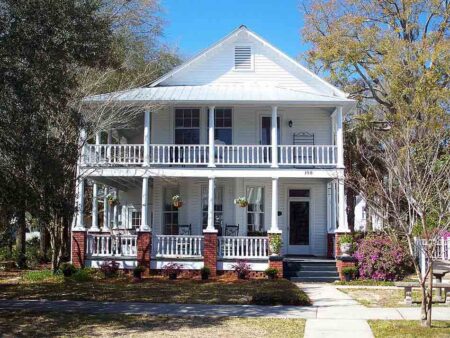Stinkhorns belong to an order of fungi that include puffballs, earthstars and the bird’s nest fungi. Their putrid odor (described as rotted meat) motivates people to seek advice on control measures. But with the exception of their objectionable smell, stinkhorns pose no problem.
A foul-smelling mushroom from the stinkhorn fungus is creating a stink in some landscapes in Northwest Florida. It appears in many landscapes during the cooler weather of fall, winter and early spring.
Stinkhorns belong to an order of fungi that include puffballs, earthstars and the bird’s nest fungi. Their putrid odor (described as rotted meat) motivates people to seek advice on control measures. But with the exception of their objectionable smell, stinkhorns pose no problem.
Stinkhorn fungi start as white, egg-like structures that are anchored to the soil by a root-like network. Only the top of the egg-like structure can be seen. Most of the “egg” is underground.
Based on the type of stinkhorn, the fruiting structure (mushroom) will be either column or stalk-like in shape or globular, lattice-like in shape. Mushrooms vary in color but most are pink to orange. They range from 2 to a little over 6 inches in height and from one-half to 3 inches in width. All stinkhorn mushrooms possess foul odors, which attracts insects such as ants and flies that carry the mushrooms’ spores to other places.
The stinkhorn fungus is beneficial because it helps rot wood. More often than not, these mushrooms are found where wood is used as mulch.
Management options include:
- Tolerance: Learn to live with them as they represent beneficial organisms to the soil ecology. Keep windows closed during periods of mushroom production to minimize odor problems.
- Eradication: Hand-pick the “egg” stage before it ruptures and put it in a zipper bag and discard. Small or new colonies may be eradicated through complete removal of an area of mulch to the depth of the native soil. No guarantees with this method.
- Environment alteration: Use of non-mulch groundcovers, such as ivy, jasmine, liriope, mondo grass, etc., will reduce stinkhorn incidence in a landscape. Distance large mulched areas away from the house.
There are no legal effective or practical chemical control options.
Larry Williams is the Extension horticulture agent with the Okaloosa County Cooperative Extension Service, University of Florida. Contact Larry at 689-5850 or email lwilliams@myokaloosa.com.







